Best Herbs and Salad Greens to Grow Indoors Over Winter – For Fresh Flavor Through the Coldest Months
Don't give up on growing fresh produce during the winter. Bring the flavors inside! Check out these 10 best herbs and greens to grow indoors this winter.
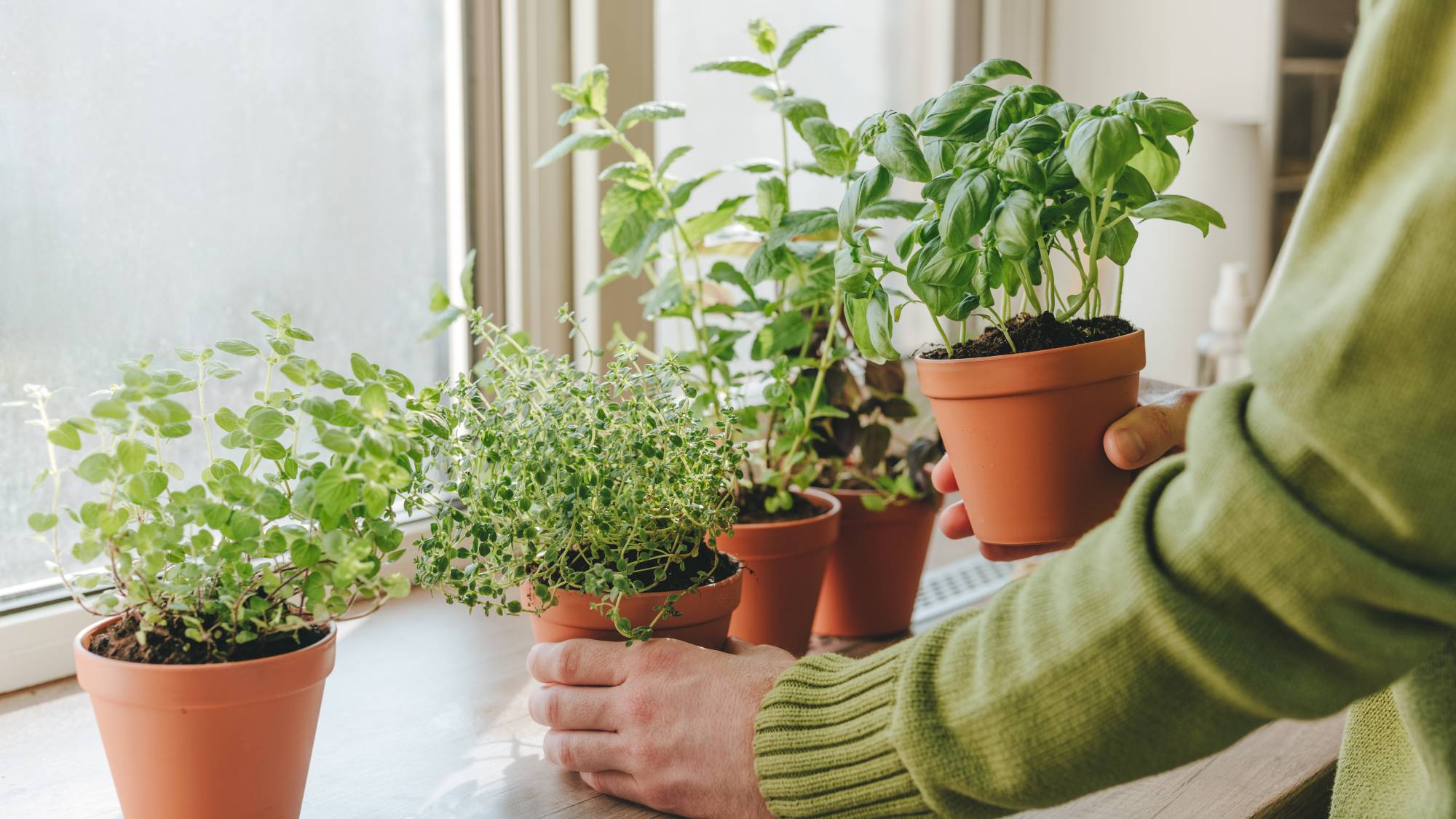

It’s just about “last call” in your outdoor vegetable garden. In most areas, it’s out of the question to plant new crops this deep into fall. But no need to get too sad as you pick the last spinach or basil – since you can grow both green leafy vegetables and many favorite herbs indoors in containers. All you need is a sunny window or a good grow light.
There are many delicious edible plants to grow inside it just depends on what you like to eat! You can plant a selection of Italian herbs if that's what you like to cook with. Or make a mini indoor salsa garden with a dwarf tomato plant and cilantro.
Here are my personal favorites to consider, but remember to pick the ones your family is likely to eat. The sky is the limit.
5 Great Herbs to Grow Indoors
These herbs are easy growers, full of flavor, and will liven up your kitchen during the bleak winter days.
1. Parsley

Do you have a bright window? If so, you’ll find parsley easy to grow indoors. Soak the seeds for 24 hours before planting. Select a pot with drain holes, then add quality soil. Moisten the soil, then place the seeds on the soil, covering them lightly. Keep the soil moist, but not wet.
Parsley requires 6-8 hours of bright sun per day. If there’s not enough natural light, use a grow light. Find flavorful Italian flat leaf parsley seeds from Park Seed.
2. Chives
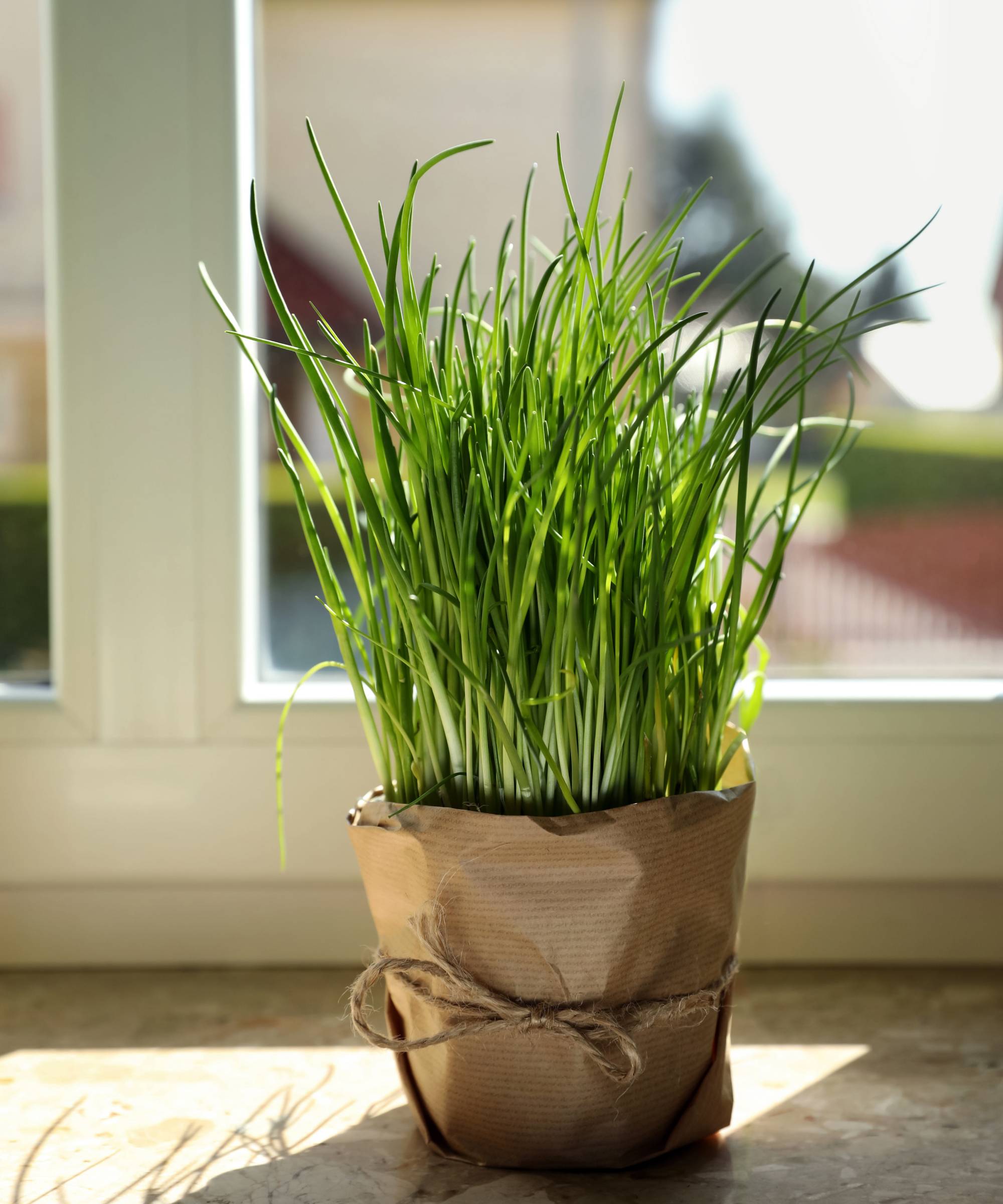
This onion relative – that looks like hollow grass - grows fast from seeds sprinkled on moist, well-draining soil. Put your indoor chive container in a full sun location. When the chives are mature, snip off a few from the base. To the extent possible, use them the same day you clip them, since they have the most flavor when they are freshly harvested. Find a pack of 100 chives seeds from Park Seed.
Sign up for the Gardening Know How newsletter today and receive a free copy of our e-book "How to Grow Delicious Tomatoes".
3. Mint
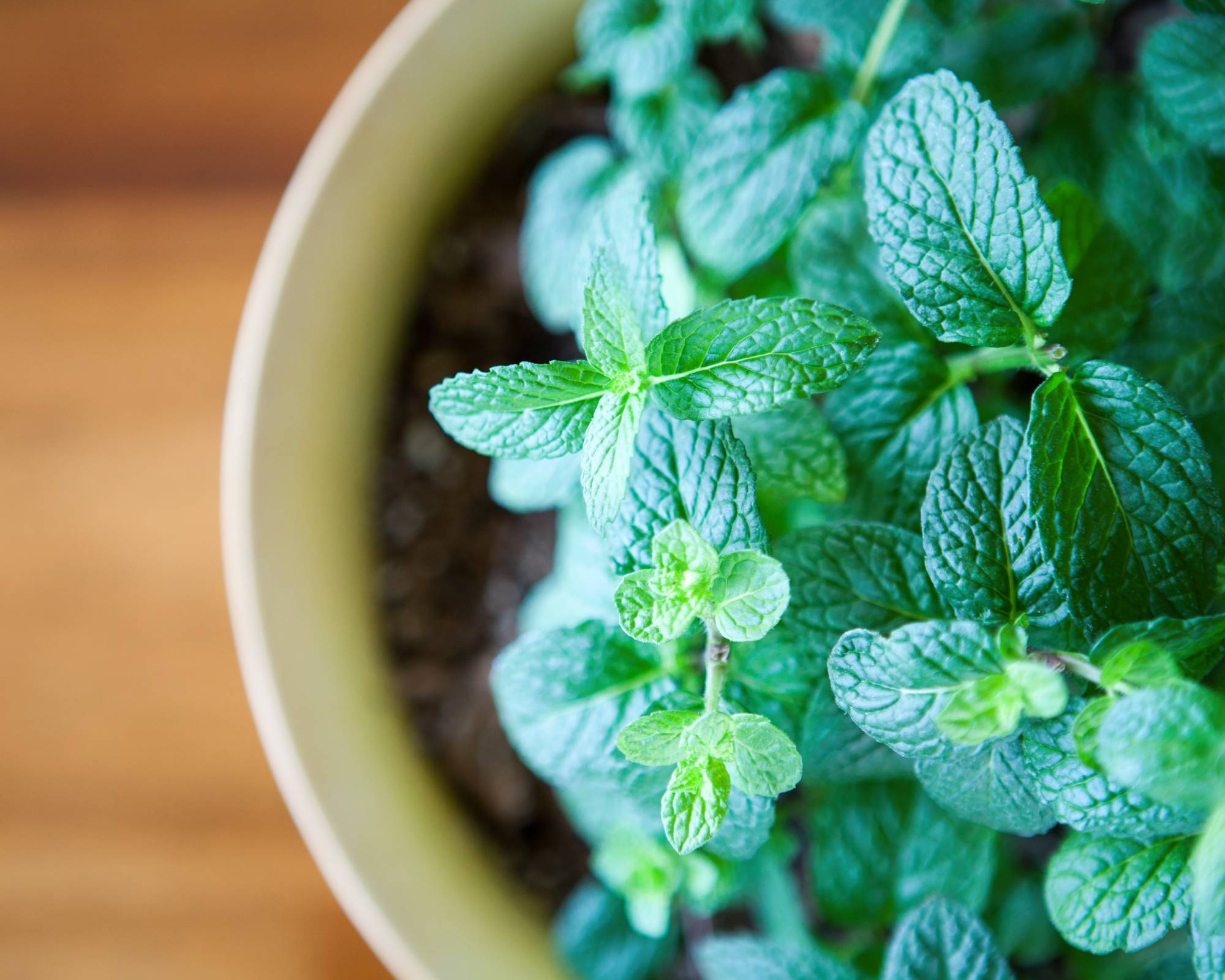
If you have mint in your backyard garden, you know that this is not a plant that needs coaxing. It’s more likely to take over the entire garden than die back. Grow mint indoors after digging it up from your outdoor garden. Mint overwinters indoors quite easily, as long as you have a sunny window. Don’t use one of those shallow containers however – you’ll want a mint container to be at least 12 inches (30cm) deep and some 8 inches (16cm) in diameter. Mint needs regular watering, not misting, to thrive. So take it to the sink, fill up the container, and let it drain. Find peppermint seeds for sale at Walmart.
4. Basil

Basil is a lovely plant to grow indoors, with its big, bright green leaves. You can buy a young plant at the garden store, transplant one from outside into an indoor pot, or take cuttings from outdoor pots. They root very quickly in water. Use a compost-based potting soil and keep the soil moist. Keep it in a spot that is consistently warm for best results. Find a great culinary blend of basil seeds from Park Seed.
5. Cilantro
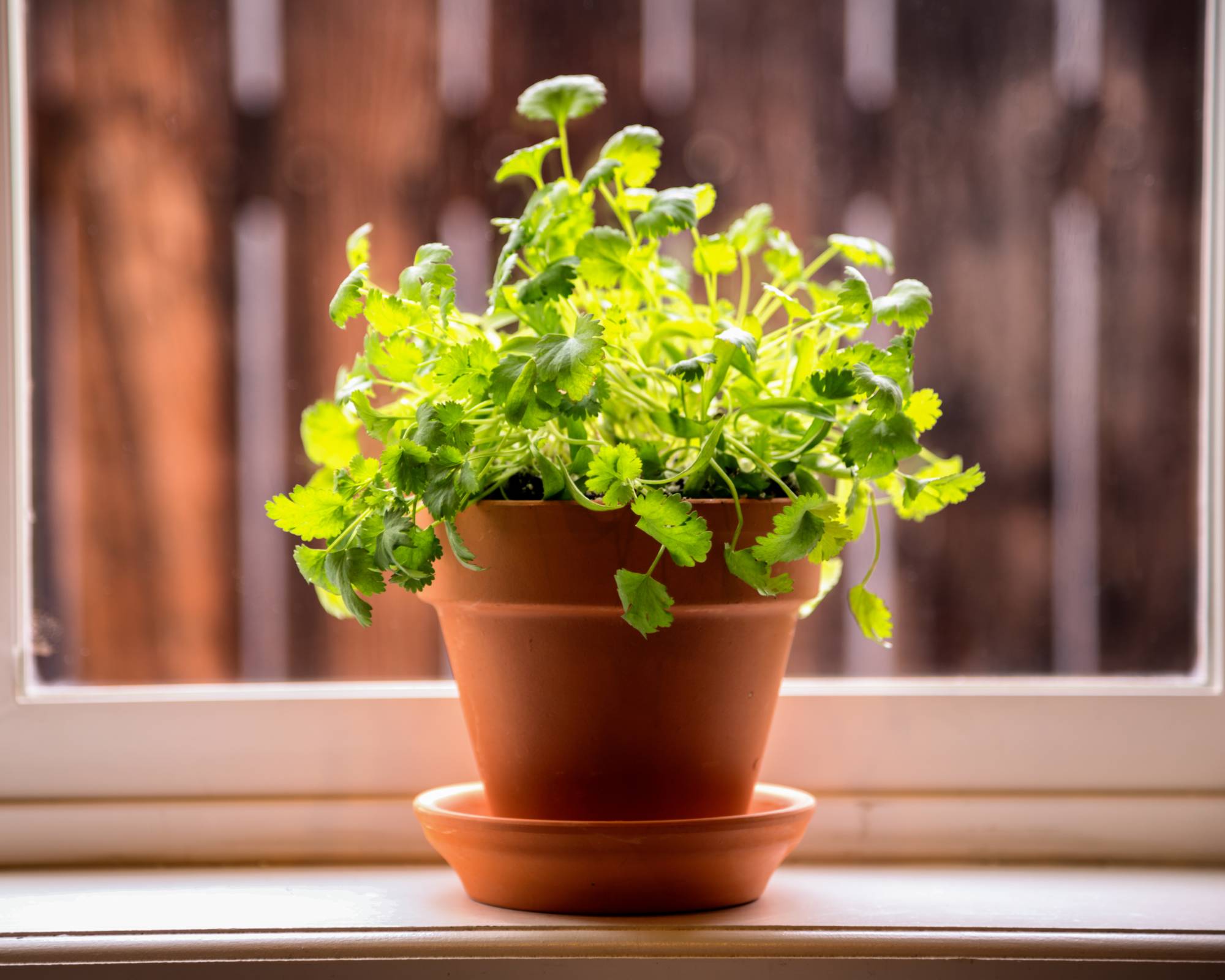
Indoor cilantro is another fast-growing herb, moving from seed to harvest in less than a month. Getting the plant the correct sunlight is the hardest part about growing cilantro indoors, since it will wilt in direct sun but craves bright indirect sun. Plant the cilantro seeds in a big container, at least 18 inches (45 cm) wide and 12 inches (30cm) deep. The soil should be consistently moist. Pinch off the outer leaves to use for cooking, leaving the inner leaves to grow. Cilantro is ready to harvest in just three to four weeks. Heirloom 'slow bolt' cilantro seeds can be found at Walmart.
5 Best Leafy Greens to Grow Indoors
You don't have to forgo fresh, homegrown produce just because it is winter. Try these container grown salad greens indoors this winter and see what you've been missing!
1. Spinach
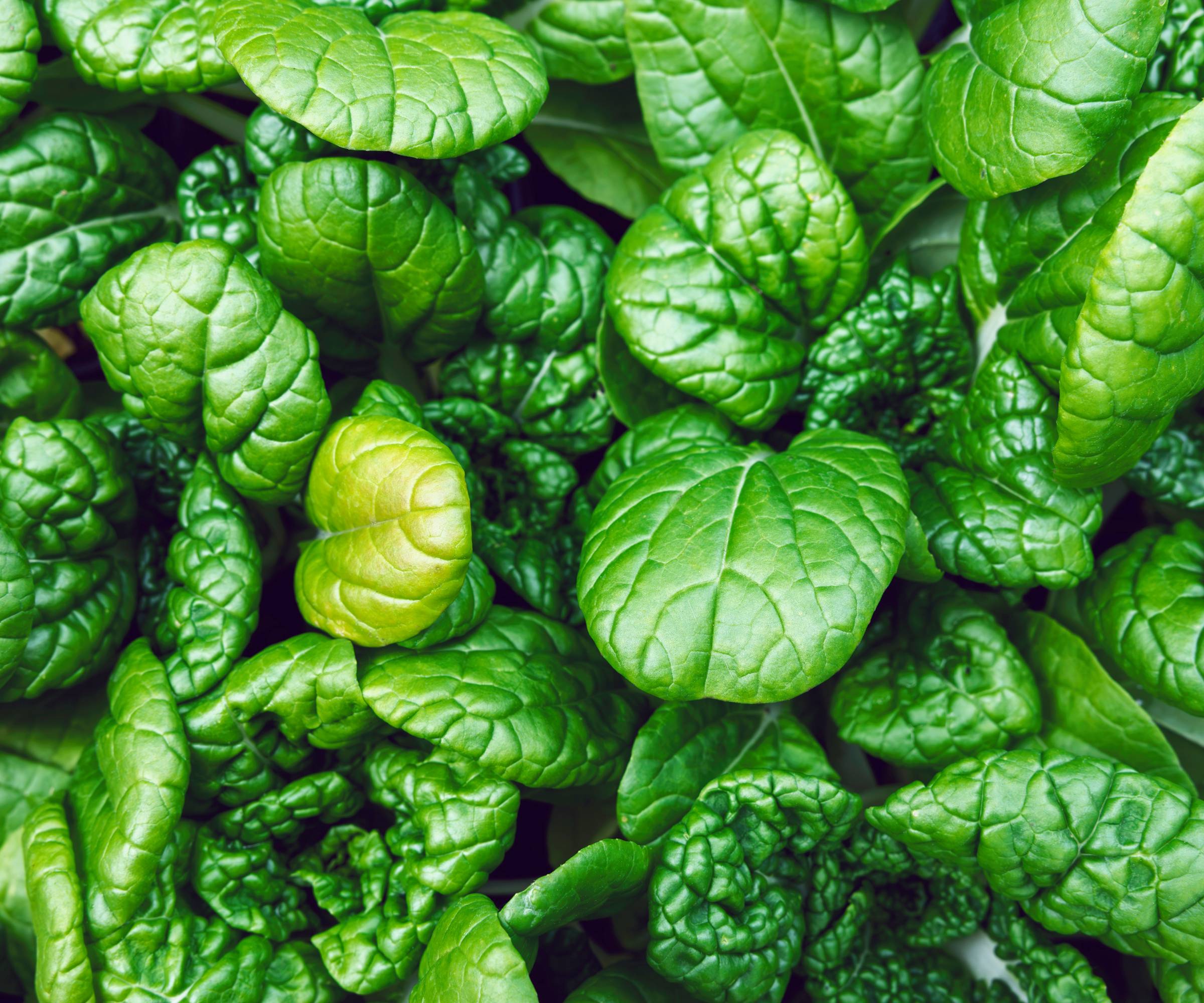
To grow spinach indoors, you’ll need fairly deep containers – between 6 and 8 inches (30-40cm) – and a sunny window or grow light for at least 12 hours a day. Seeds should be about ½ inch (2.5cm) deep in moist soil some 2 inches (10cm) apart. Keep the soil moist during the entire growth period. Once true leaves appear, thin seedlings to 3 inches (15cm) apart. Harvest the outer leaves first to allow inner leaves to keep growing. Tender and delicious baby leaf spinach seeds can be found at Park Seed.
2. Lettuce
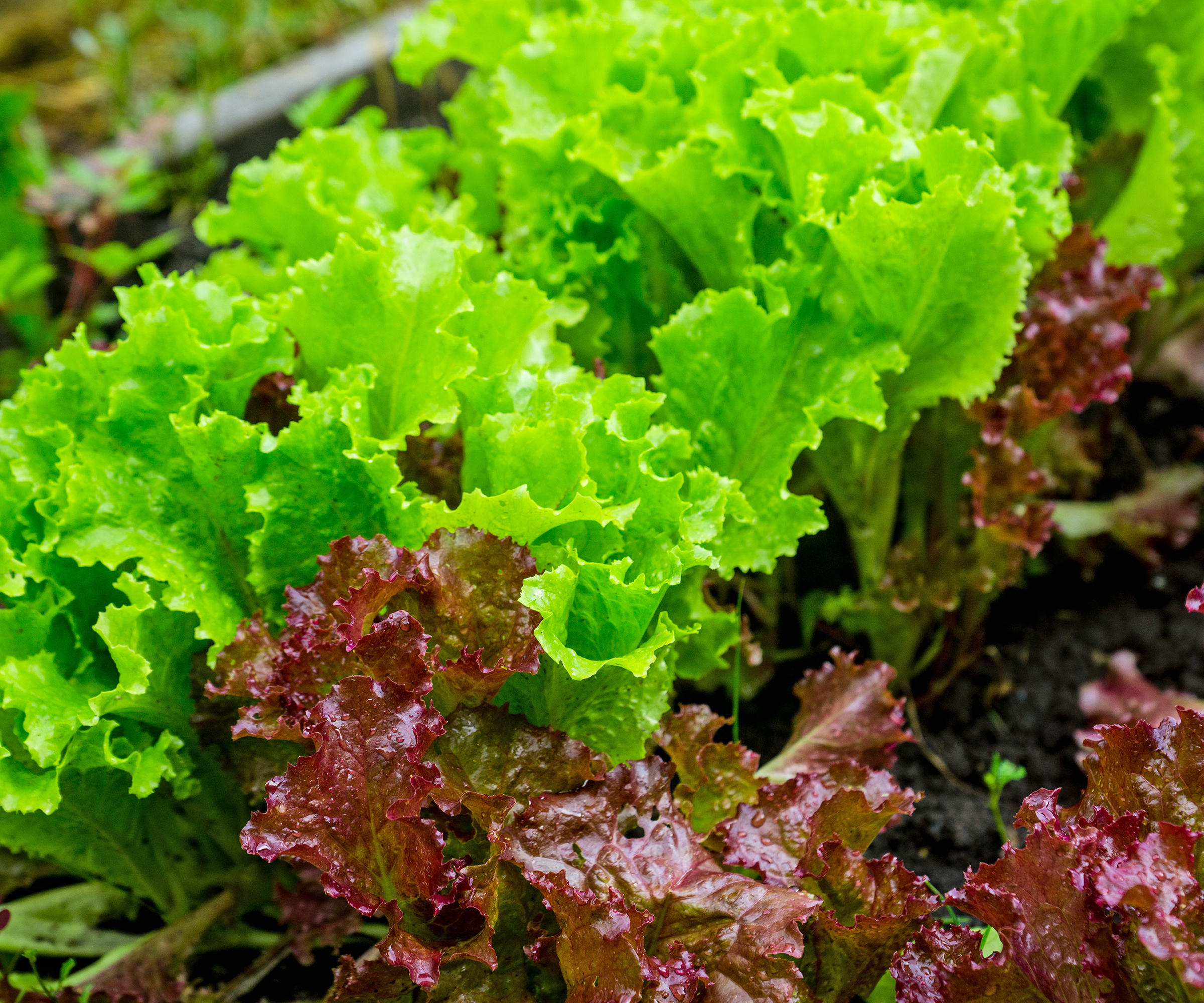
What vegetable grows fast and has shallow roots? Lettuce! And no salad is more delicious than one made of baby lettuce grown in your kitchen window. You won’t need a deep container. A planter that is only 2-4 inches (5-10cm) is deep enough! Fill with soil, press the seeds onto the soil surface, then mist with water. Wait until the plants are 6 inches (30cm) tall before you start harvesting outer leaves. It will take between one and two months. Park Seed has an impressive selection of tasty lettuces that sure to fit your culinary needs,
3. Microgreens
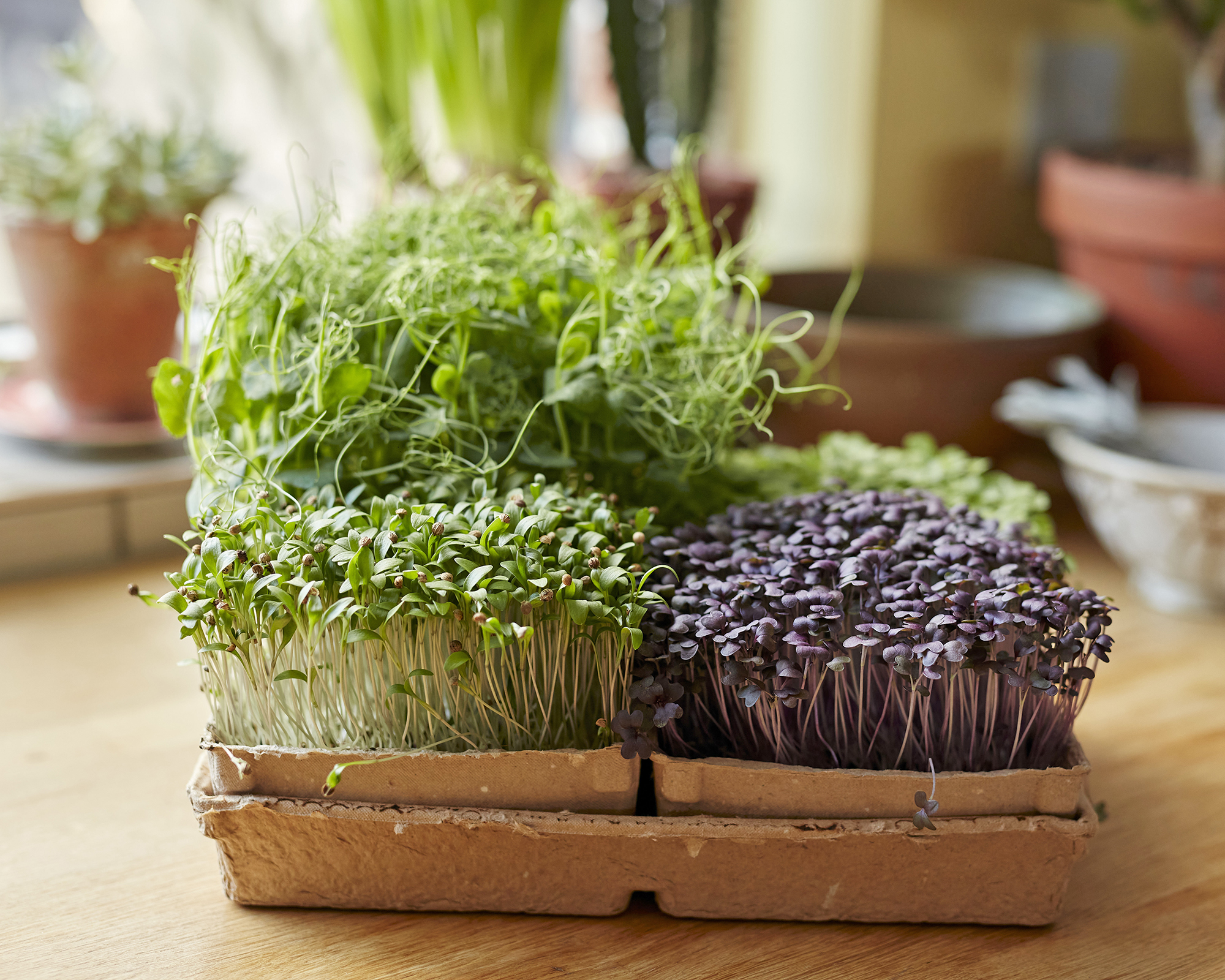
Easy sneezy to grow indoors, microgreens are tiny sprouts that grow from seeds of other plants, like Swiss chard, basil, and beets. They are harvested and tossed into salads when they are seedlings so you never actually get the mature vegetables. Like lettuce, microgreens don’t need deep pots, just a few inches of soil will do well. Scatter the seed mix then press the seeds gently into the soil. Spray to water the seeds and expect to see sprouts in a few days. Snip off the sprouts at soil level when seedlings have grown two sets of true leaves. This usually takes two to three weeks. Try this micro mini greens mix from Park Seed.
4. Arugula

Leafy greens that make good indoor crops have some of the same characteristics: they grow fast, are compact plants, and only need moderate sunshine. Arugula meets all of these criteria. And you can get a continual crop by sowing seed every few weeks. The plants mature at a month to six weeks. Try using peppery arugula in a salad mix or even on top of a prosciutto and cheese pizza! This 'speedy' arugula from Park Seed is ready in 30 days.
5. Mesclun Mix
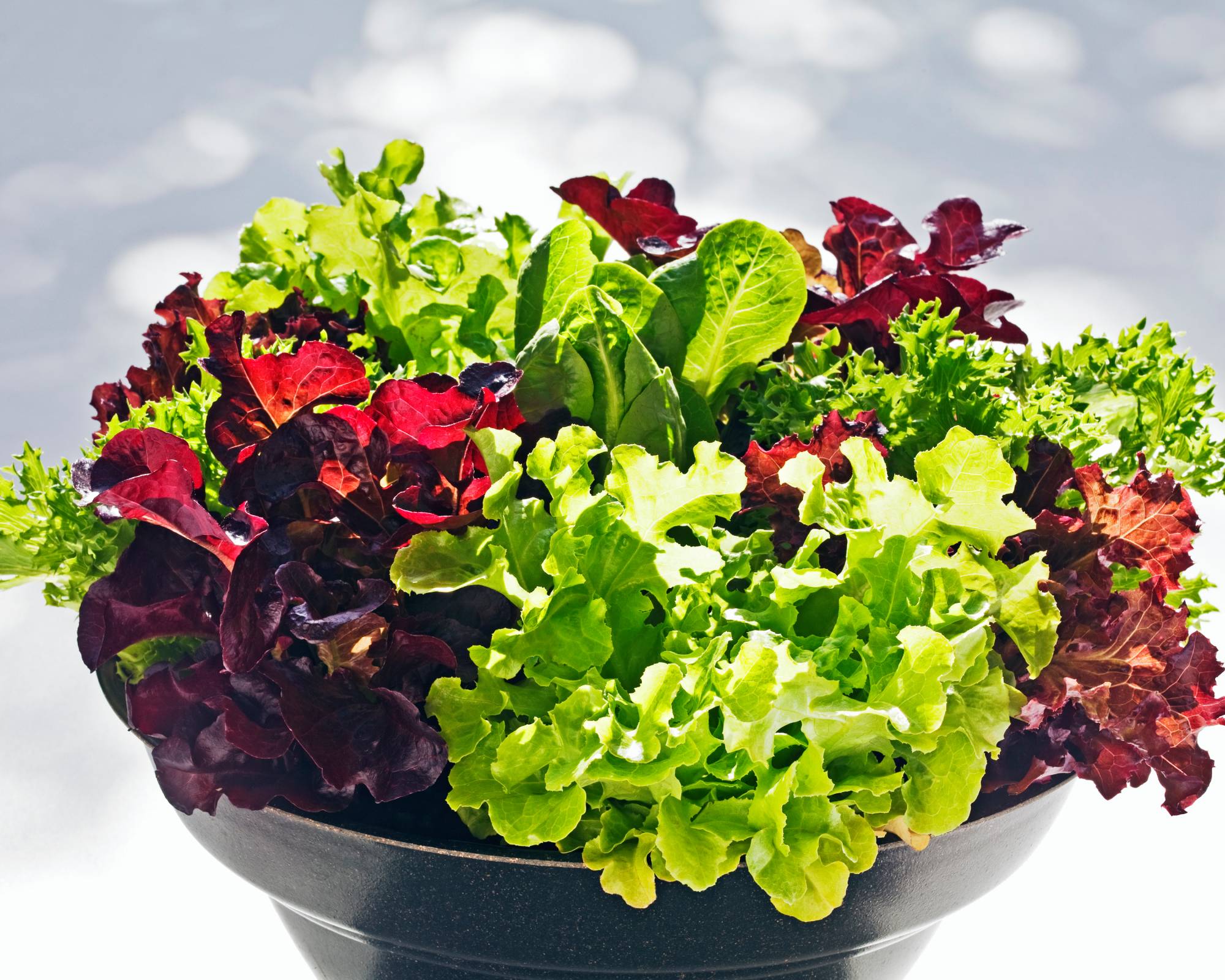
Mesclun greens are a mixture of various small, young salad greens. Traditionally, the mix was chervil, arugula, corn salad greens, oakleaf lettuce and endive, but other greens can be excluded or swapped in. Use a container between 4 and 6 inches (10-15cm) deep filled with good potting soil. Sprinkle the seeds on the soil, then add a shallow layer of soil on top. Water well and keep the soil moist. Place in an area that gets lots of direct sun, or use artificial light. Harvest starts in about three weeks, taking outer leaves first. Grow your mesclun mix with the 'Sow Effortless' disc from Park Seed. Just plant the pre-sown biodegradable disc and get ready for delicious salads in no time!
Indoor Growing Kits
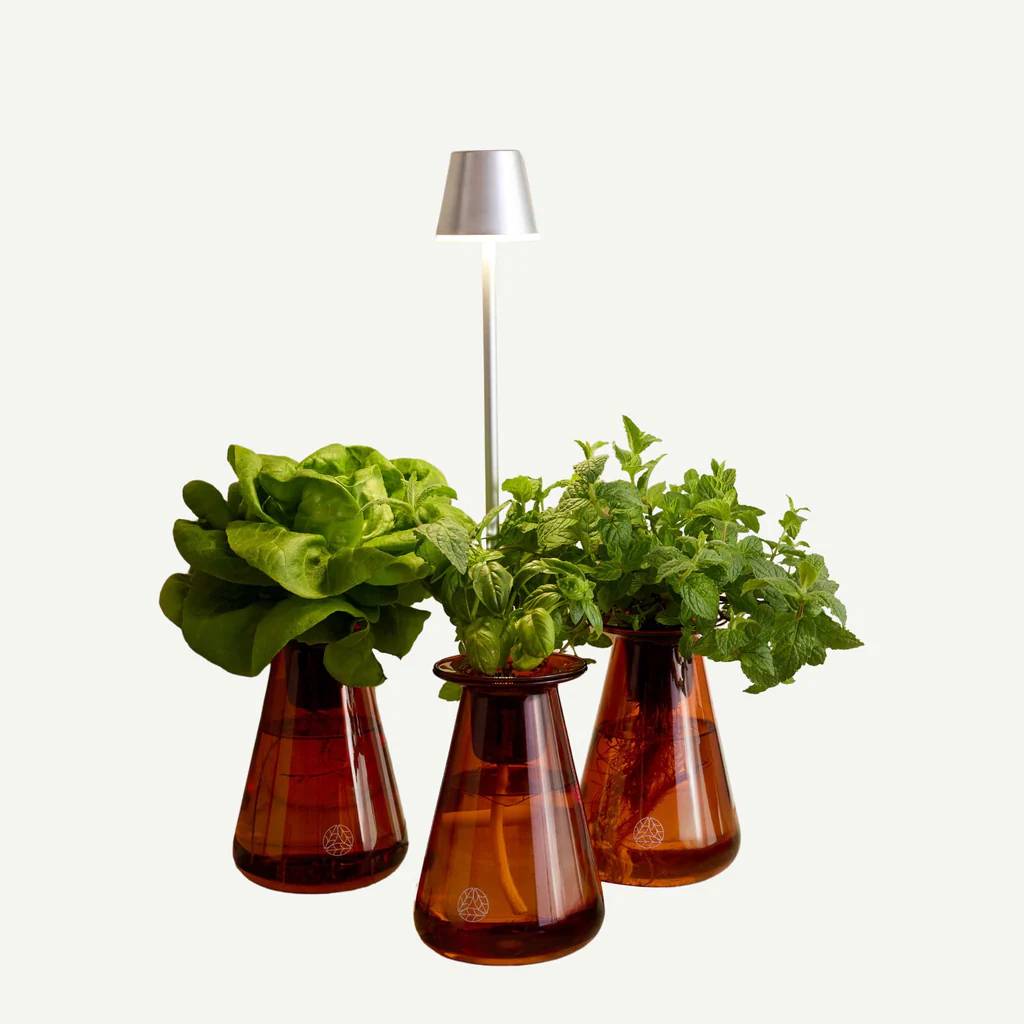
This reusable hydroponic grow kit from Lettuce Grow is an easy way to grow herbs and veggies and also looks beautiful on any counter.

This organic herb garden growing kit is a perfect way to get started on a windowsill herb garden this winter.
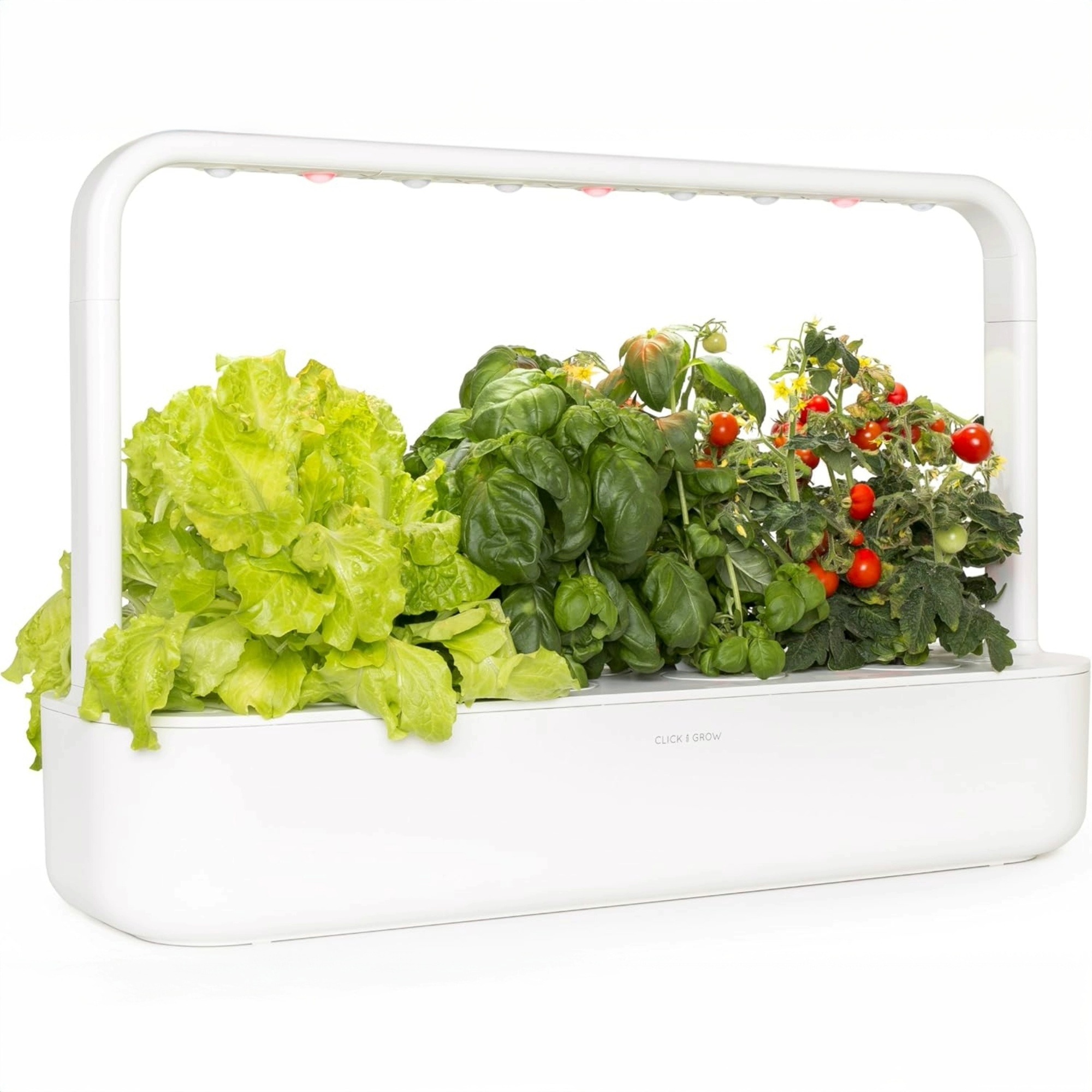
This indoor herb garden is completely self-sufficient and mess free. Editor Kathleen Walters loves the ease of use and great produce she has grown with it.
Best Tips for Indoor Container Gardening

- Sun or grow light: You’ll need sun to get your greens or herbs growing. A south-facing window is your best bet, but you can use grow lights instead or in addition to sunshine. A good started grow light is the Barrina full spectrum grow lights from Amazon.
- Use good potting soil: Don’t buy bottom-of-the-barrel soil. A quality potting mix will give the seeds the necessary nutrients.
- Use appropriate containers: Not every type of plant requires the same depth of soil. Some only need 2 inches (5cm), while others require 8 inches (20cm). Whatever containers you choose should have drainage holes.
- Keep soil moist: Container plants have limited soil and it can dry out quickly. Check daily and spray or water sufficiently to keep it appropriately moist.
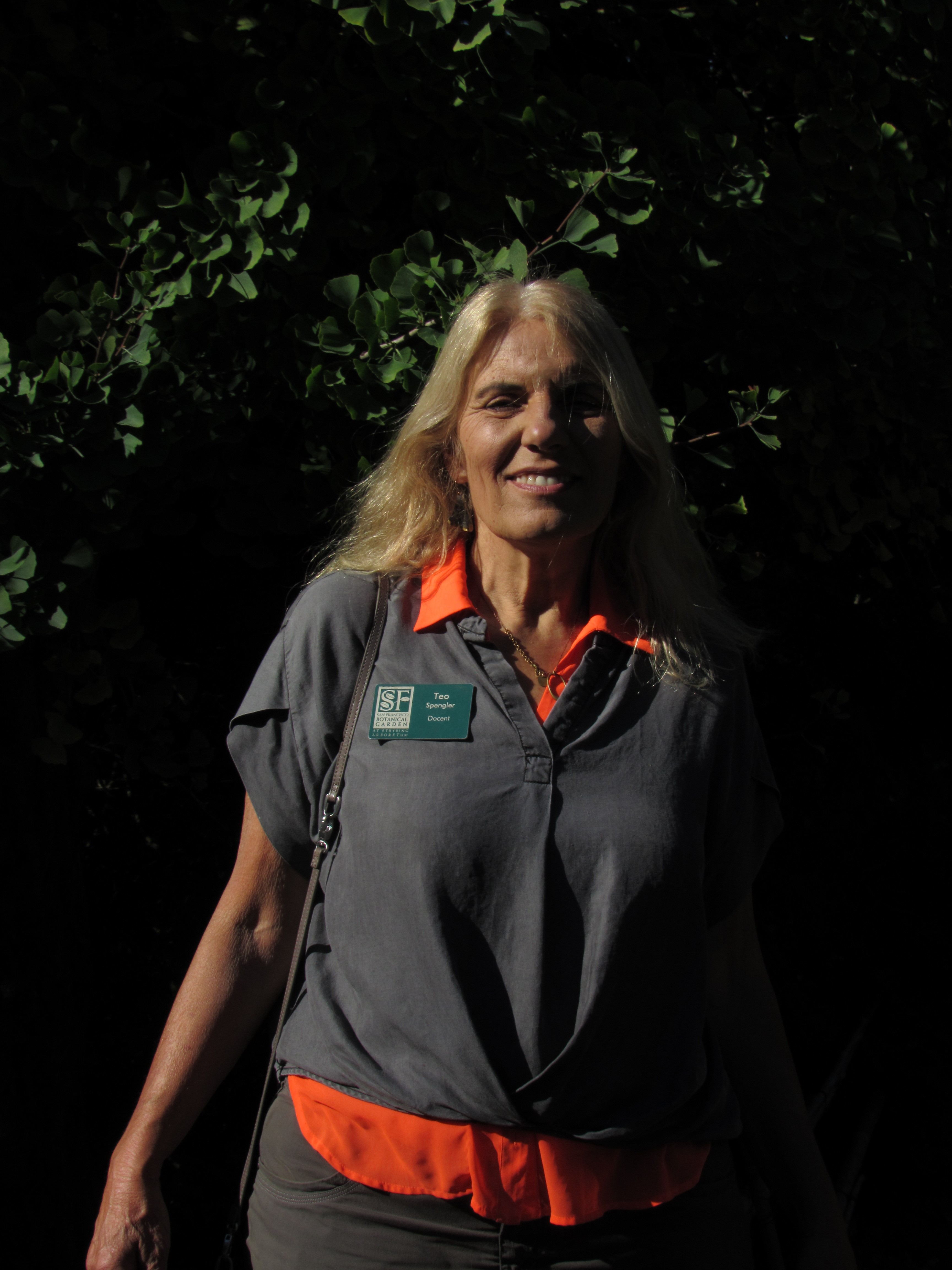
Teo Spengler is a master gardener and a docent at the San Francisco Botanical Garden, where she hosts public tours. She has studied horticulture and written about nature, trees, plants, and gardening for more than two decades, following a career as an attorney and legal writer. Her extended family includes some 30 houseplants and hundreds of outdoor plants, including 250 trees, which are her main passion. Spengler currently splits her life between San Francisco and the French Basque Country, though she was raised in Alaska, giving her experience of gardening in a range of climates.
- Kim StoddartContent Contributor, Award-Winning Journalist, and Author
- Kathleen WaltersContent Editor